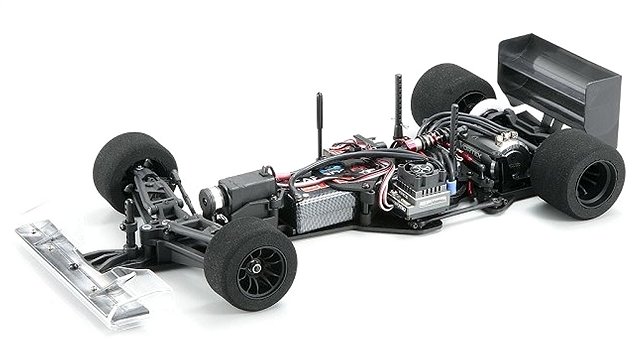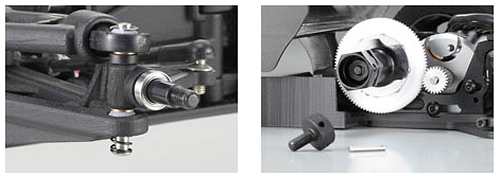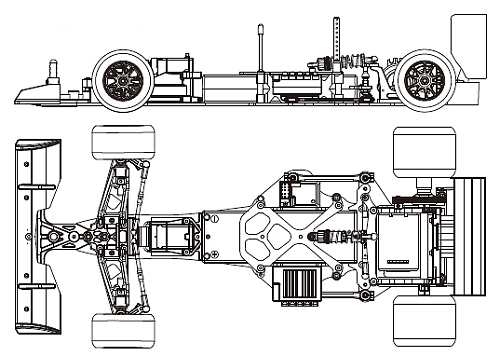

|
|
|


|
|
1/10 Scale Electric Formula One Car:
Kyosho Plazma Formula - 30412
|
Released by Kyosho in 2012, the Plazma Formula - # 30412 - F1 car, comes with a ball differential, coil spring over oil filled damper and a full set of ball bearings.

To race the Kyosho Plazma Formula, it requires a high level of tuning for improved stability when cornering, to keep it on the track and give you more grip under acceleration. Even the smallest change in your cars settings can make a Big difference. Our simple to follow instruction chart will show how to attain the best Set-up for your personal requirements.








|
|
|

★ Kyosho Plazma Formula - 30412 ★

★ Kyosho Plazma Formula - 30412 Chassis ★

|
Buying a Used Radio Controlled Model
|
|
Manufacturers and Brands Catalogued, Listed and Reviewed by RC-Scrapyard.
At present, the RC Model Manufacturers, Brands and Distributors covered by us are: ABC Hobby, Academy, Acme Racing, Agama Racing, Amewi, Ansmann Racing, ARRMA, Team Associated, Atomic RC, Axial, AYK, Bolink, BSD Racing, Capricorn, Carisma, Carson, Caster Racing, Cen, Corally, Custom Works, Durango, Duratrax, ECX - Electrix, Exceed RC, FG Modellsport, FS-Racing, FTX, Fujimi, Gmade, GS-Racing, Harm, HBX, Helion, Heng Long, Himoto Racing, Hirobo, Hitari, Hobao, Hong-Nor, Hot Bodies, HPI, HSP, Intech, Integy, Jamara, JQ Products, Kawada, Kyosho, Losi, LRP, Maisto, Mardave, Marui, Maverick, MCD Racing, Megatech, Mugen, New Bright, Nichimo, Nikko, Nkok, Ofna, Pro-Pulse, Protech, PTI, RC4WD, Redcat Racing, RJ-Speed, Robitronic, Schumacher, Seben, Serpent, Smartech, Sportwerks, Step-Up, Tamiya, Team-C Racing, Team Magic, Thunder Tiger, Tomy, Top Racing, Traxxas, Trinity, Tyco, Vaterra RC, Venom, VRX Racing, WLToys, X-Factory, Xmods, Xpress, Xray, XTM, Yankee RC, Yokomo, ZD Racing and Zipzaps. |
|
Hints, Tips and Information
How to Drift your RC Car
Drifting is the greatest fun you can have on four wheels, but it isn't as easy as it might look. There are lots of different methods and ideas on how it should be done and it takes lots of practice to get it right. |
|
Hints, Tips and Information
Bumpsteer
In plain language, Bumpsteer is exactly what it sounds like. If your car goes over a bump, it will affect the toe-in setting and can on some tracks make handling of the car in a straight line difficult. |
|
RC Models:
|
Radio & Motors: |
Other
Accessories: |